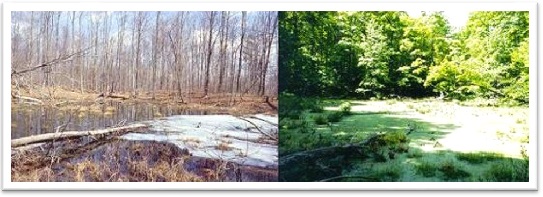Lake Champlain
Phosphorus Levels in Six Tributaries of Missisquoi Bay
Rules Determining Mean Water Levels
Fact Sheet- 2002 Lake Champlain Phosphorus TMDL
2002 Lake Champlain Phosphorus TMDL
Cyanotoxin Monitoring Program
The summer of 2024 marks the tenth year of DWGPD's voluntary cyanotoxin monitoring program for public drinking water systems. This program offers no-cost analysis of raw and finished water for microcystin (a potent liver toxin produced by some species of cyanobacteria) to surface water systems across the state. Samples are analyzed on a weekly basis from July to early November by the Vermont Agriculture and Environmental Laboratory (VAEL).
Thank you for your patience as we update this page and consolidate data for ease of access.
Special Studies

The Watershed Management Division participates in “special studies” when the need arises, such as:
Zebra Mussel Monitoring Program
 Lake Champlain Zebra Mussel Monitoring Program
Lake Champlain Zebra Mussel Monitoring Program
The Vermont Department of Environmental Conservation (VTDEC), in cooperation with the Lake Champlain Basin Program, initiated the Lake Champlain Zebra Mussel Monitoring Program in 1994 to track the zebra mussel's distribution through the lake. Reports are provided annually.
